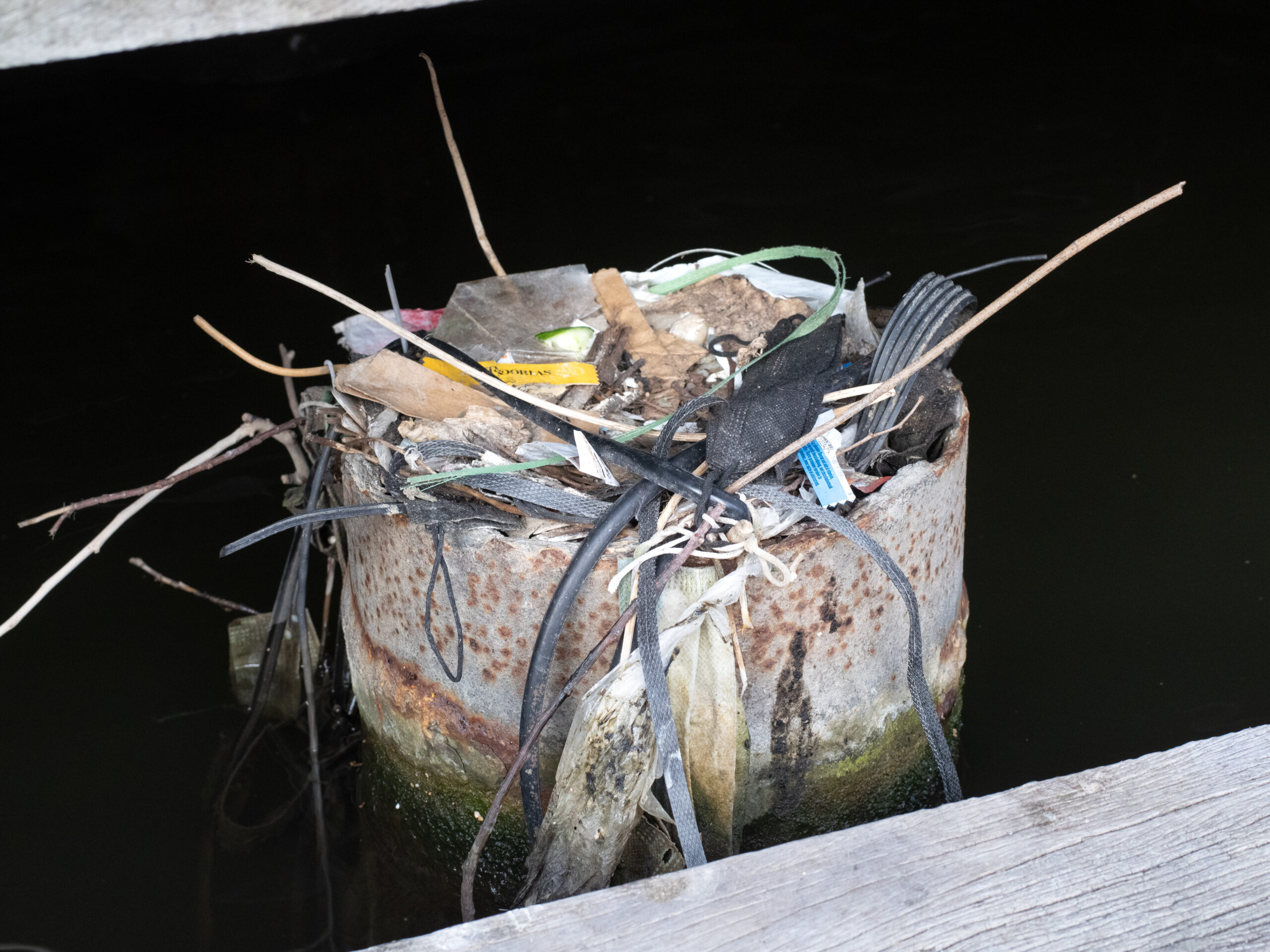Natural history: Amsterdam’s 30-year-old coot’s nest goes global
Brandon Hartley
An empty bird’s nest spotted in Amsterdam in 2021 has become world famous, attracting the attention of The Guardian, The New York Times, National Geographic and other publications – because of its historical value.
The nest was gradually built by several generations of coots between the early 1990s and early 2020s and serves as a time capsule for over three decades of Amsterdam history. It was discovered on a canal in front of the Allard Pierson Museum of Antiquities.
“The placement of the nest is brilliant,” Auke-Florian Hiemstra, a doctoral student at the Naturalis Biodiversity Center, told Dutch News. “If coots are going to make an archaeological nest like this, what better place than in front of an archaeological museum? It’s like a mini museum full of 30 years of human artefacts.”
Hiemstra has been studying how wildlife adapts to urban environments for years and is one of the authors of a paper about the nest, which was published in the scientific journal Ecology. He’s been involved with other research projects that have attracted international headlines, among them a fish that was caught in a rubber glove during the Covid pandemic and birds ironically using anti-bird spikes in their nests.
The Amsterdam nest contains over 600 man made objects, including a Mars bar wrapper promoting the 1994 World Cup and a ticket to Amsterdam’s National Maritime Museum. Many of the contents originated from McDonalds and included several fritessaus containers and a McChicken box dating back to mid 1990s.
Studying the nest became both an archaeological and a geological project as Hiemstra and his colleagues dug through its layers. They also discovered a milk container with a precise date and time stamp and a thick layer consisting of Covid-related items like face masks.
Coots are aquatic birds and rarely reuse nests. They usually fall apart within mere weeks following the conclusion of breeding season because they’re made of grass and similar vegetation. All the trash in this nest meant it could be used repeatedly over the course of several decades.
“If you’re a coot and your nest is made out of plastic, you can come back the following year and it’s still there,” Hiemstra said. “You can just add some new stuff on top since the foundation is still stable. It really saves time, so there’s more time to defend your territory and fight other coots.”
There are downsides, however. Old nests tend to attract parasites. Trash like face masks contain elastic that birds and their chicks can get caught in, too.
Hiemstra said there’s still a lot left to learn about how coots in particular are adapting to city life and whether or not they’re passing on their building tips to subsequent generations.
“If a coot is born in a ‘plastic nest’ like this one and the only nest it knows is full of Covid masks, Snicker wrappers, and similar stuff, it’s a sad image of the world they get,” he said. “But we’re not sure if a coot born in a plastic nest would be more likely to build a plastic nest themselves.”
He also noted that it’s almost impossible for coots living in cities like Amsterdam to build nests entirely with natural materials. Many of them have to add man-made objects, typically trash.
A real museum piece
The nest is due to be moved to the Museon-Omniversum in The Hague and will soon be on display to the public as part of its permanent collection.
“History is not only written by humans,” Hiemstra and his colleagues wrote in the research paper. “Nature, too, is keeping score.”
You can learn more about the nest in a thread Hiemstra wrote about it on his BlueSky account.
Thank you for donating to DutchNews.nl.
We could not provide the Dutch News service, and keep it free of charge, without the generous support of our readers. Your donations allow us to report on issues you tell us matter, and provide you with a summary of the most important Dutch news each day.
Make a donation